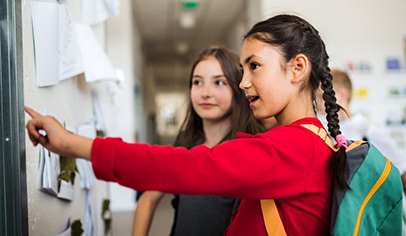Bullying in schools includes actions such as making threats, spreading rumors, attacking someone physically, verbally, or digitally, and excluding classmates from group activities on purpose.
HALFPOINT/123RF
by Lauren Bayliss
Bullying, which is traditionally defined as, abuse and mistreatment of someone vulnerable by someone stronger, more powerful, etc. has changed drastically over the past 20 years. With more and more kids gaining access to the internet and social media, cyberbullying has become one of the most common forms of bullying among students. Here are seven steps that teachers can take to help prevent all types of bullying in their own classrooms.
1. Watch for subtle bullying indicators
Keep an eye out for students who regularly roll their eyes, laugh at their peers’ questions, use sarcasm, or say things under their breath. These “gateway indicators” are common behaviors that should raise a red flag. Noticing gateway indicators can help teachers identify when student has the intention to bully another student. Other subtle signs that someone is being bullied include having a student who goes to the nurse often or has a sudden decline in classroom engagement.
2. Identify your class leaders
In every class there are students who are natural leaders, and others who are on the shier side. Since shy students may be too nervous to speak up if they are being mistreated by another student, identify the leaders in the class and use them as your ears and eyes. Check in with those students often and start a conversation with them about the importance of coming forward if they see that a more vulnerable peer is being mistreated.
3. Teach kindness in the classroom
Never assume that your students are learning the values of kindness and empathy at home, and therefore, don’t need reinforcements at school. Integrating social-emotional learning activities into lesson plans is an effective way to allow your students to practice conflict resolution and mindfulness under your supervision.
4. Build community in the classroom
Research shows that when a student feels like they are a valued part of their community, bullying incidents in the classroom decline. Build community in your classroom by holding weekly “town hall” meetings where students can openly discuss anything they want under the condition that they speak respectfully to one another. Another idea is a weekly compliment activity. To do this, everyone randomly picks another student’s name and writes down something they admire about them. If every student participates genuinely, the entire class receives an incentive, such as no homework over the weekend.
5. Pay attention at transition times
Bullying doesn’t happen exclusively on the playground. When your students first enter the classroom in the morning, when they walk from one classroom to another, when they’re getting their snacks out… it can happen in all of these in-between moments–especially subtler forms of bullying. Keep your eyes and ears open during these times for anything can could raise a red flag.
6. Reward good behavior
Students respond well to praise and will actively seek out validation. When you see kindness in motion, shout it out. Maybe set a goal for each student to engage in one act of kindness a week—everyone can share what they did at the end of the week!
7. Respond quickly and effectively
Research states that one out of five students are bullied (National Center for Educational Statistics, 2019), so chances are you will often be witness to it in your own classroom. It is important to avoid normalizing this behavior and instead address it right away. Whenever bullying gets brushed off, educators set a precedent that the behavior is acceptable. Calling out the bully and forcing them to own their behavior is an effective way to let everyone know that bullying will not be tolerated.




